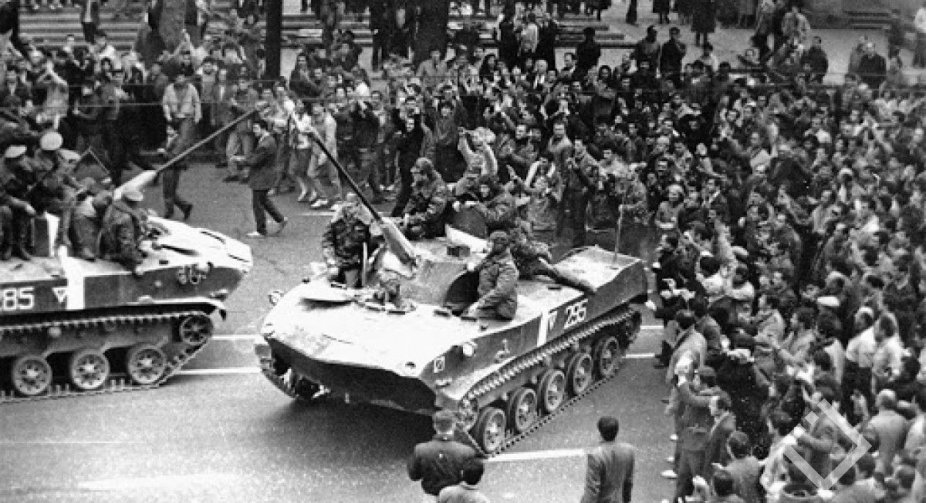33 years have passed since the tragic events of April 9, 1989 in Tbilisi. On that day, the Soviet army cracked down on a peaceful demonstration for the independence of Georgia in Tbilisi with tanks and poison gas. 16 demonstrators died immediately on the spot. In the following days, the death toll increased to 21. Most of the dead are women. Most of the dead had shovel marks. On the night of April 9, 3,500 people were poisoned by chemical gas.
It all started with a rally on March 18 in the village of Lykhny in Abkhazia, at which local residents demanded to leave Georgia and join the RSFSR. After that, protests began in Tbilisi.
Protest demonstrations reached their peak on April 4, 1989, when tens of thousands of Georgians gathered outside the Government House on Rustaveli Avenue in Tbilisi. Protesters led by the Independence Committee (Merab Kostava, Zviad Gamsakhurdia, Giorgi Chanturia, Irakli Batiashvili, Irakli Tsereteli and others) organized a peaceful demonstration and began a hunger strike, demanding the punishment of the Abkhazian separatists and the restoration of Georgia's independence. The local Soviet government lost control of the situation in the capital and could no longer resist the protests.
Since April 6, the Deputy Minister of Defense of the USSR, General Kochetov, has been in Tbilisi. On the morning of April 7, a meeting of the Politburo headed by Ligachev took place. After that, an order was given to transfer regular and internal troops to Tbilisi.Kochetov, commander of the Transcaucasian Military District, Colonel Rodionov and Jumber Patiashvili, First Secretary of the Central Committee of the Communist Party of Georgia, developed a general plan to disperse the protesters.
On April 7 at 21:00, Patiashvili asked the leadership of the USSR to send support forces to restore order.
On April 8, a meeting of the Republic's Defense Council was held, at which Rodionov and Kochetov promised the members of the meeting that the operation would be carried out without bloodshed. Rodionov accepted the agreement from Defense Minister Yazov.
During the day, the 4th regiment of the motorized rifle division, special forces militia detachments from Perm and Voronezh were transferred to Tbilisi.
On April 9, at 04:00 am, units of the Soviet Army attacked the protesters in front of the government building and dispersed them with unprecedented brutality.
On April 9, at 11:00, a curfew was announced in Tbilisi, but the local population was informed about this only at 22:15. Rodionov was appointed military commandant.
Deadly weapons were used during the dispersal: chemicals, shovels, firearms, armored vehicles and tanks.
Two years later, on April 9, 1991, President Zviad Gamsakhurdia declared this date the day of the restoration of state independence.
